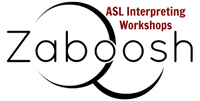Centuries of Standing: A History of Platform Interpreting in the UK and US

Workshop Description:
This presentation documents selected milestones in the development of platform signed language interpreting, from the late 18th to early 20th centuries, among British Sign Language (BSL) and American Sign Language (ASL) communities of practice. “Platform” is a term of art in the signed language interpreting field to indicate working with a larger audience, where signers and interpreters typically stand upon a feature that is positioned above the audience. Platform work can have signed or spoken source and target texts, in various language combinations, e.g.,
[signed to spoken] [spoken to signed] [signed to signed]
Archival methods, supplemented with research into personal histories, situates subjects within their lives and times. The last workshop described legal precedents for intermediaries working with deaf parties. Turning to the later practice of platform interpreting in this session broadens historical analyses away from deaf individuals toward settings more rooted in the service of signing Deaf communities. These examples given can be categorized as:
Churches - Professional - Community
The work of both hearing and deaf interpreters will be covered, in the UK and US; one French precursor is also included.
Presenter Bio:
Anne grew up in St. Louis, Missouri, the home to three schools for Deaf children, and minutes away from the St. Louis Club for the Deaf. However, she never visited any of those places—the schools were all privately operated, and taught only through speechreading. All of the locals she met used their voices, and she never saw people signing in public. She quickly chose language as her specialty, and entered kindergarten with a 5th grade reading level.
While at Brigham Young University, Anne’s roommates wanted the apartment to take a class together, and decided on American Sign Language. Two months after they began in January 1988, the Deaf President Now protest at Gallaudet University left a permanent impact on both the Deaf and interpreting communities. Each semester at BYU, another roommate would bow out, and in the end, Anne is the only one who signs in a professional capacity, or at all. She began interpreting in November 1989, and was certified by the Registry of Interpreters for the Deaf in 1994. She is very much a product of her time, and the trajectory of arriving just as the interpreting field accelerated its progress through social and legislative actions.
Her master's thesis found Anglo–American legal interpreting practice with signing deaf parties developed before Deaf schools, signed languages, and communities were formed. She is currently expanding her historical study through a PhD by research in Translation Studies at the University of Birmingham (UK), to be completed in 2019. Anne has taken her private practice to the Chicago and Washington, DC areas, and is now based in Salt Lake City, Utah, but continues to travel nationwide and internationally on assignments.
For more information, please see interpreterhistory.com, Facebook at InterpreterHistory, or Twitter @interphistory.
